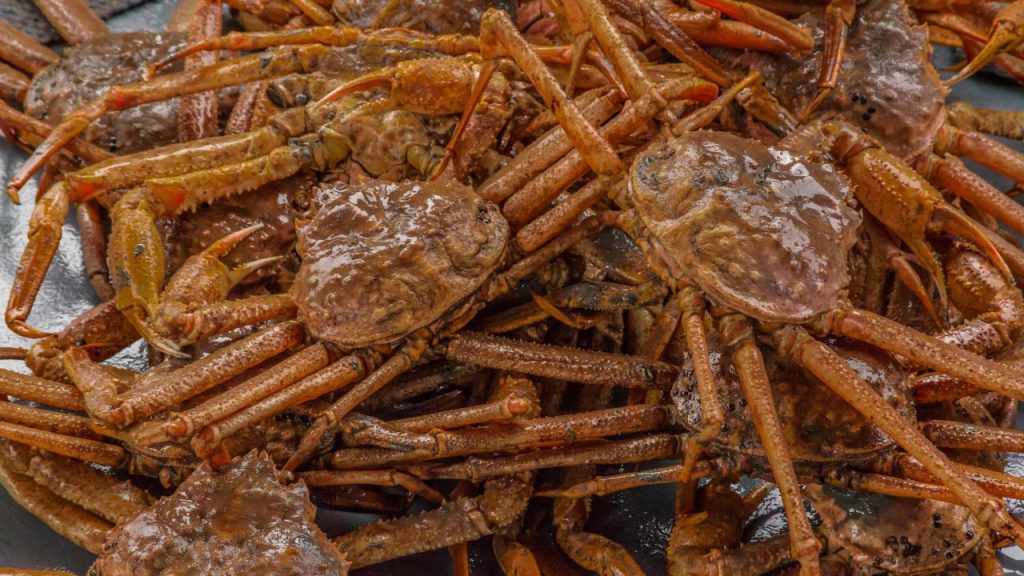(CNN) — Alaska’s snow crab fishery has been canceled for the first time since billions of crustaceans disappeared from the cold and treacherous waters of the Bering Sea in recent years.
The Alaska Board of Fisheries and the North Pacific Fishery Management Council announced last week that snow crab populations in the Bering Sea had fallen below regulatory thresholds to open fisheries.
But the actual numbers backing up that conclusion are staggering: According to Benjamin Daly, a researcher with the Alaska Department of Fish and Game, the snow crab population has declined from about 8 billion in 2018 to 1 billion in 2021.
“The snow crab is the most abundant of the commercially caught Bering Sea crab species,” Daly told CNN. “So the shock of the disappearance of billions of people, including all females and calves, is significant.”
Agencies have also announced the closure of the Bristol Bay red crab fishery for the second year in a row.
Officials cited overfishing as the reason for canceling seasons. Mark Stichert, fish and shellfish management coordinator for the state Department of Fish and Game, said more crabs are being caught than can be replenished naturally.
“So there were more removals from the population than there were entries,” Stichert explained at Thursday’s meeting.
Between surveys conducted in 2021 and 2022, mature male snow crabs declined by about 40%, with an estimated 45 million pounds remaining in the entire Bering Sea.
“It’s a scary number, to be clear,” Stichert said.
But calling the Bering Sea crab population “overfished” — the technical definition that prompts conservation action — says nothing about what caused its decline.
“We call it overfishing because of the scale,” Michael Litzow, director of NOAA Fisheries’ Kodiak Observatory, told CNN. “But it wasn’t overfishing that caused the decline, that’s clear.”
Litzo says man-made climate change is a major cause of the crabs’ dangerous extinction.
Snow crabs are cold-water species and are mostly found in areas with water temperatures below 2 degrees Celsius, Litzo says. As the oceans warm and sea ice disappears, the seas around Alaska become inhospitable to life.
“There are a number of attribution studies that have looked at the specific temperature of the Bering Sea or the Bering Sea ice in 2018, and those attribution studies have concluded that the temperature and low ice conditions in the Bering Sea are a global effect of warming,” Litzow said.
Temperatures around the Arctic have warmed Four times faster According to scientists, than in other parts of the planet. Climate change has caused a rapid loss of sea ice in the Arctic, particularly in Alaska’s Bering Sea, which increases global warming.
Ethan Nichols, an assistant area management biologist for the Alaska Department of Fish and Game, told CNN that “fishery closures due to very low numbers and continued research are the main efforts to restore the population at this time.”
Stichert also said there may be “hope for the future” as a few young snow crabs are starting to appear in the system. But it may take at least three or four years for them to mature and help people recover.
“It’s a ray of hope,” Litzo said. “Of course it’s better not to see them. We’re warming a little bit every year, and that variability is greater in arctic ecosystems and high-latitude ecosystems, so if we can get a cold season that’s good news for the crab.” of snow”.
CNN’s Paradise Afshar and Sarah Turnbull contributed to this article.

“Music ninja. Analyst. Typical coffee lover. Travel evangelist. Proud explorer.”

:quality(85)/cloudfront-us-east-1.images.arcpublishing.com/infobae/TEQF6EONZRFGLLLDIDD4L2O4EE.jpg)

:quality(75)/cloudfront-us-east-1.images.arcpublishing.com/elcomercio/XU32LRAEZFDDPNVHLFU3CKVBYY.jpg)



More Stories
Earthquake in the US today, Wednesday, May 29 – Earthquake’s exact time, magnitude and location via USGS | USGS | composition
President Arrivalo is left with no alternatives to dismissing the Attorney General
Passenger dies after jumping off world’s largest cruise ship in Florida